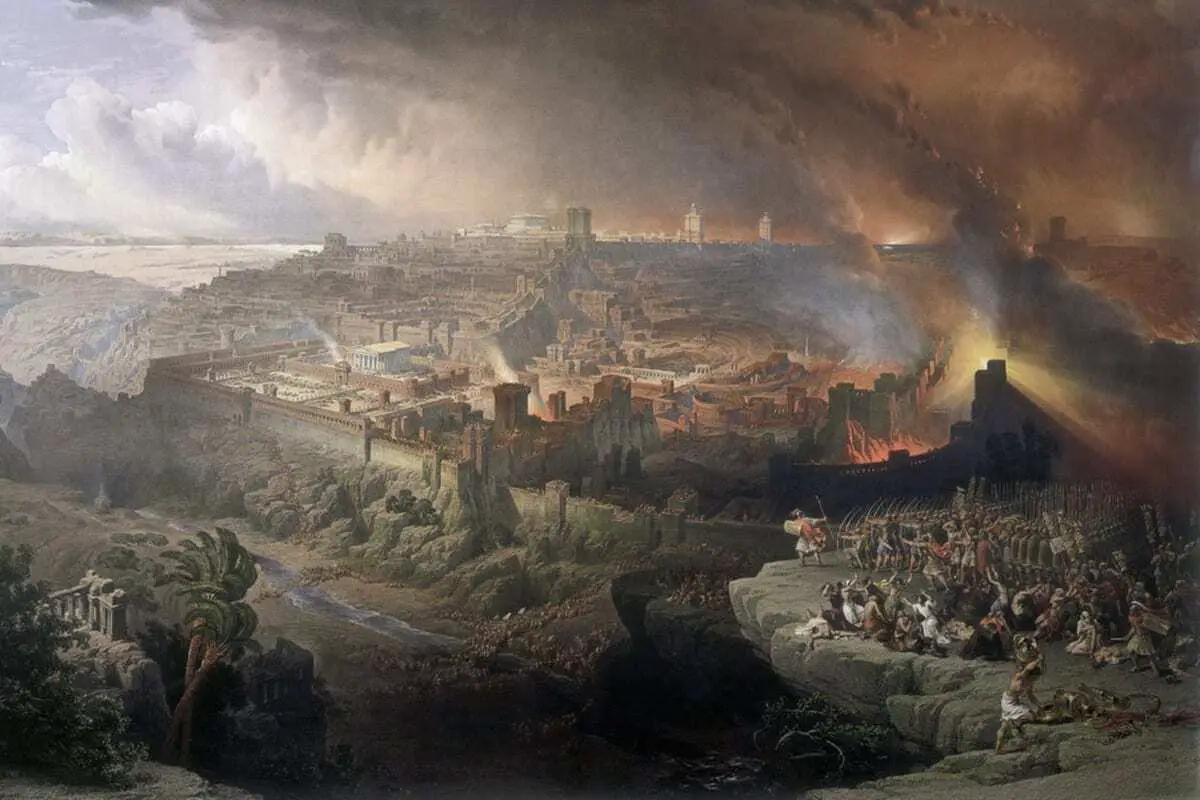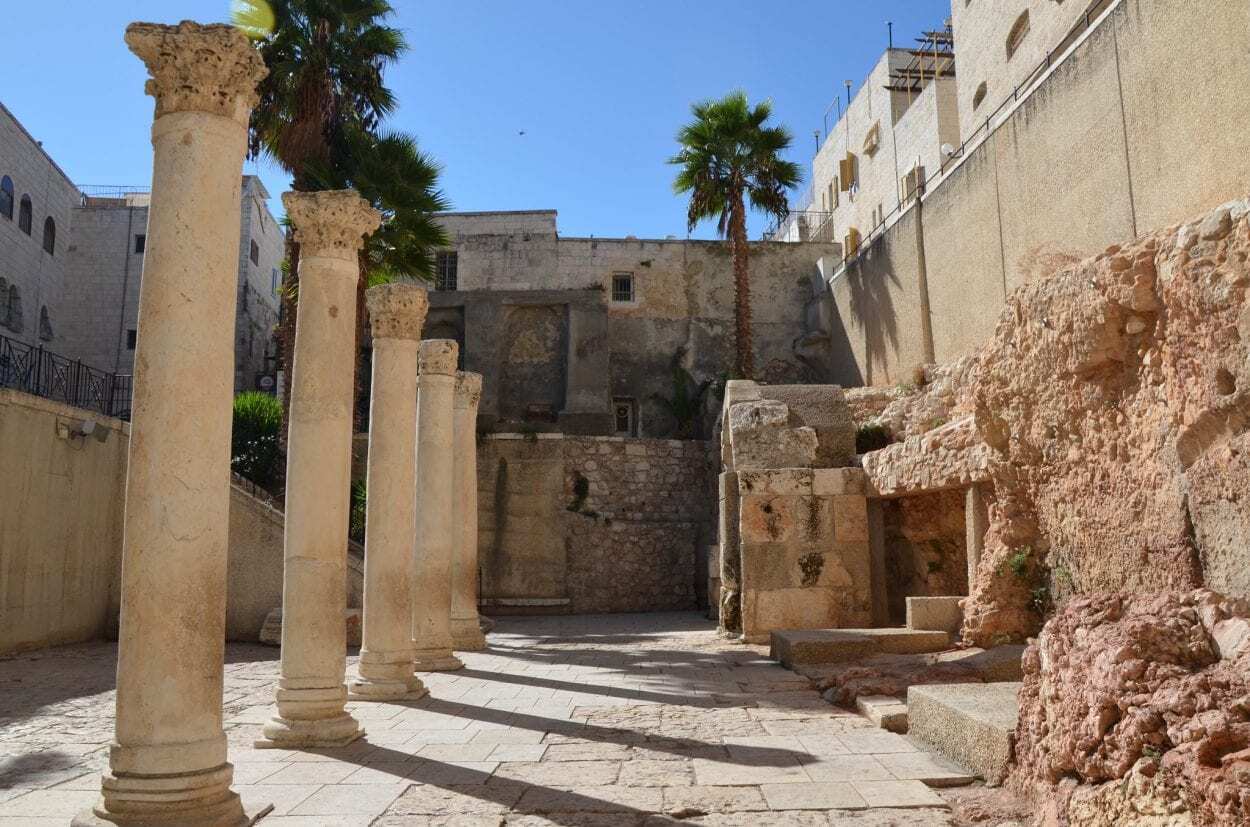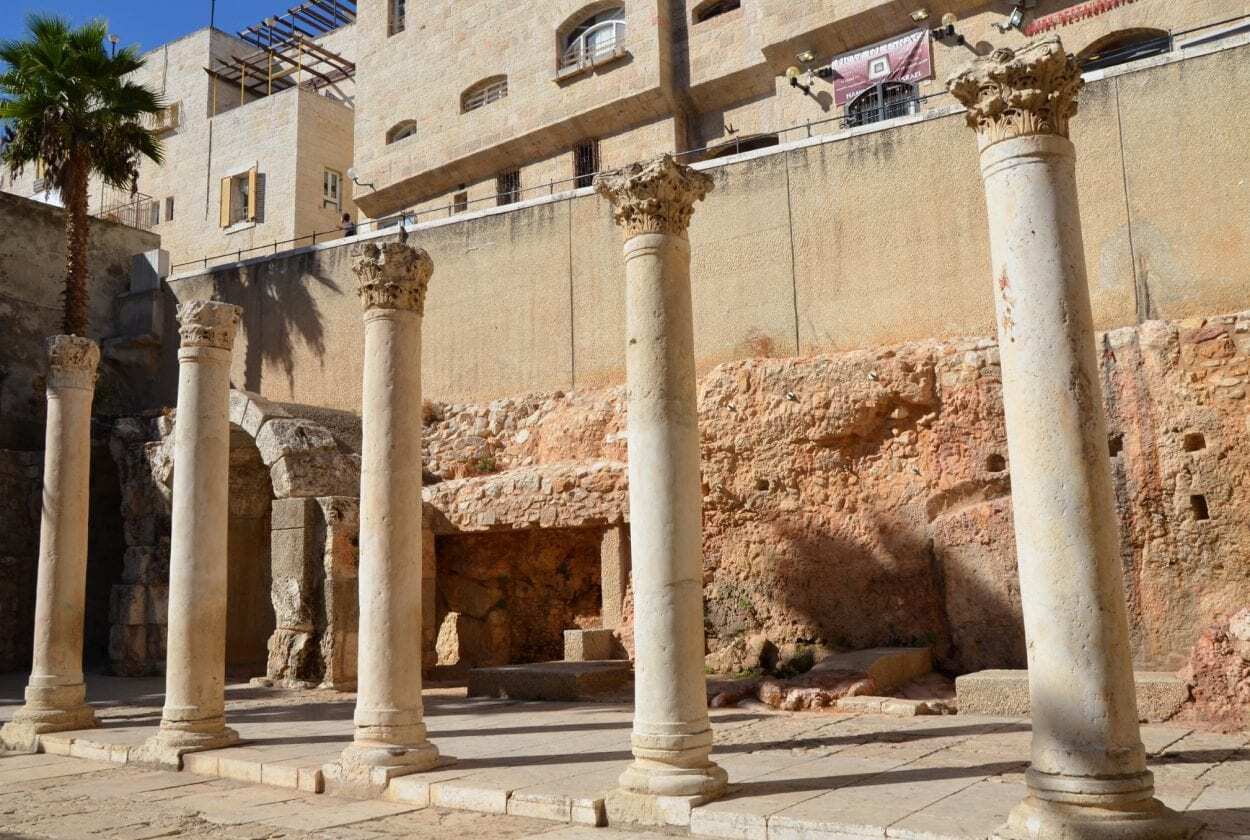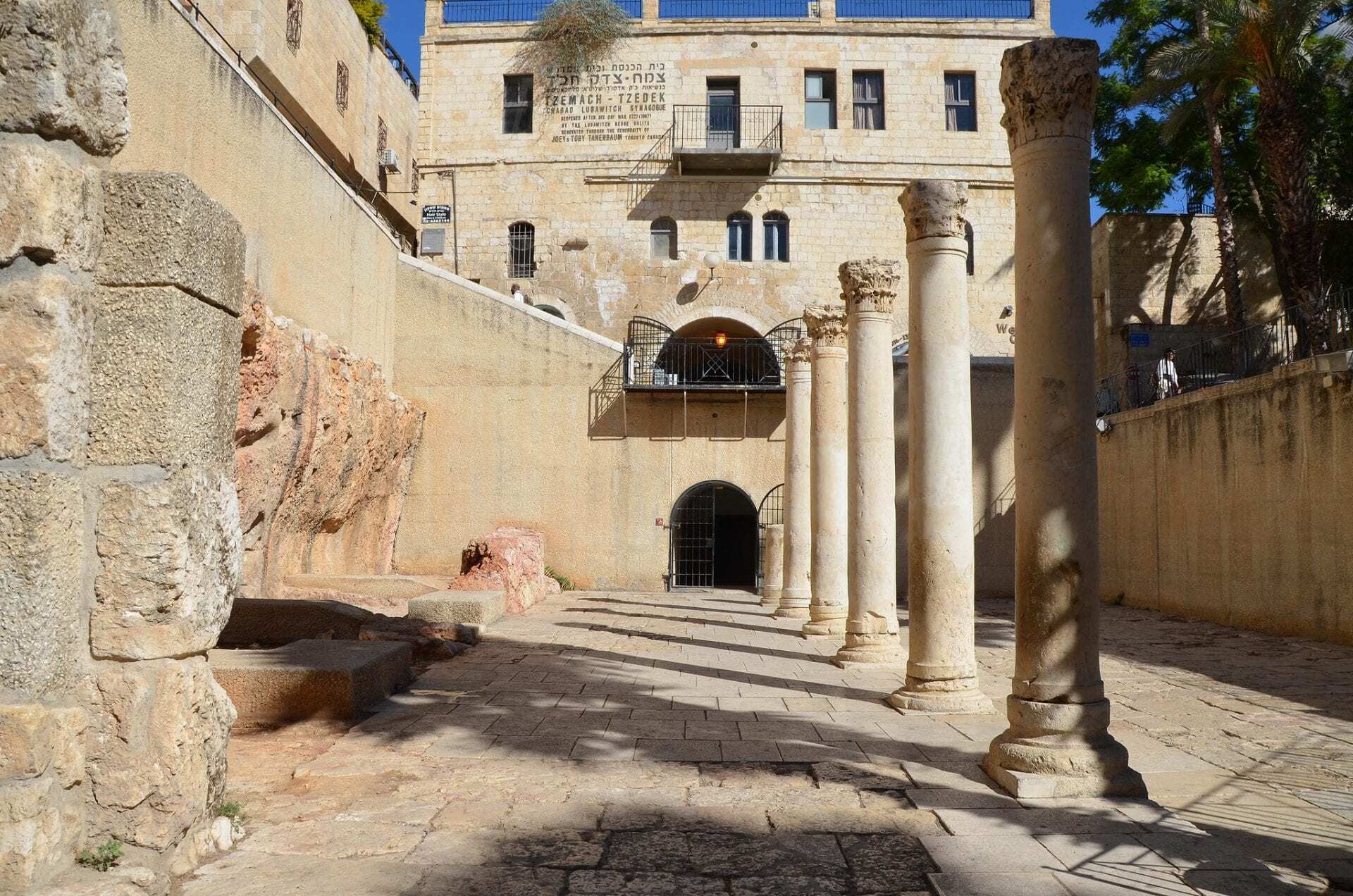Aelia Capitolina was a Roman colony, constructed after the siege of 70 AD during the First Jewish-Roman War, when the city of Jerusalem and the Second Temple on Temple Mount was destroyed.
The First Jewish-Roman War, also called the Great Revolt was the first of three rebellions against the Roman Empire that started in AD 66 during the reign of Emperor Nero. The seeds of the revolt were in response to increasing religious tensions and high taxation, leading to reprisal attacks against Roman citizens.
In retaliation, the Roman Governor of Judea plundered the Second Temple and launched raids to arrest senior Jewish political and religious figures. This led to a wide-scale rebellion, resulting in the Roman officials abandoning Jerusalem to the rebels.
Nero tasked Vespasian, a Roman general (who would succeed to the role of Emperor during the “Year of the Four Emperors”) to crush the rebellion with the support of Vespasian’s son – Titus as the second-in-command. Within several months, the Roman forces had conquered several major Jewish strongholds, displaced large population groups, and dealt a swift punishment on the inhabitants of Judea.

Titus and his legions reached Jerusalem in AD 70, placing the city under siege for four months. After several battles, the entire city and the Second Temple was destroyed, with contemporary historian Titus Flavius Josephus stating: “Jerusalem … was so thoroughly razed to the ground by those that demolished it to its foundations, that nothing was left that could ever persuade visitors that it had once been a place of habitation.”
Of the 97,000 Jewish survivors from the siege, thousands were forced to become gladiators in the arena, with many others forced into slavery to build the Temple of Peace (also called the Forum of Vespasian), and the Colosseum in Rome.
In the ruins of Jerusalem, Emperor Hadrian ordered the construction of Colonia Aelia Capitolina in dedication to Jupiter Capitolinus, and to Hadrian himself.

Aelia Capitolina was built in the form of a typical Roman city, consisting of a grid system separated by two pairs of main roads, the cardines (north-to-south) and the decumani (east-to-west) which has been preserved in parts of the layout of the Old City of Jerusalem today.
At the junction of the main cardo and decumanus, Hadrian placed the city’s main forum and a large temple dedicated to Venus (where the Church of the Holy Sepulchre is now situated).
Where Herod’s Struthion Pool (a large cuboid cistern) was originally constructed, the structure was vaulted and paved over, being later turned into a secondary forum. The remains of the paving can still be seen under the Convent of the Sisters of Zion.

Aelia Capitolina had no defensive walls but was instead protected by a light garrison of the Tenth Legion that encamped on the western hills. The garrison was responsible for enforcing a ban on Jews entering the city, except for one day each year, during the holiday of Tisha B’Av.
During the reign of Emperor Constantine I, Aelia Capitolina was renamed to Jerusalem in AD 324 and remained in Byzantine control after the collapse of the Western Roman Empire. Apart from a brief period under Persian rule, Jerusalem was ruled by the Byzantines until the early 7th century AD, when the city was captured by Sassanid’s, aided by Jews of Palaestina Prima.
The Byzantines would recapture the city in AD 629, but fall to the Arab armies of Umar ibn al-Khattab in AD 638 and renamed to “Iliya”, reflecting the Roman name Aelia Capitolina, with the site of the Temple Mount being named Madinat bayt al-Maqdis – meaning ‘City of the Temple’.
Header Image Credit : Carole Raddato – CC BY-SA 2.0





